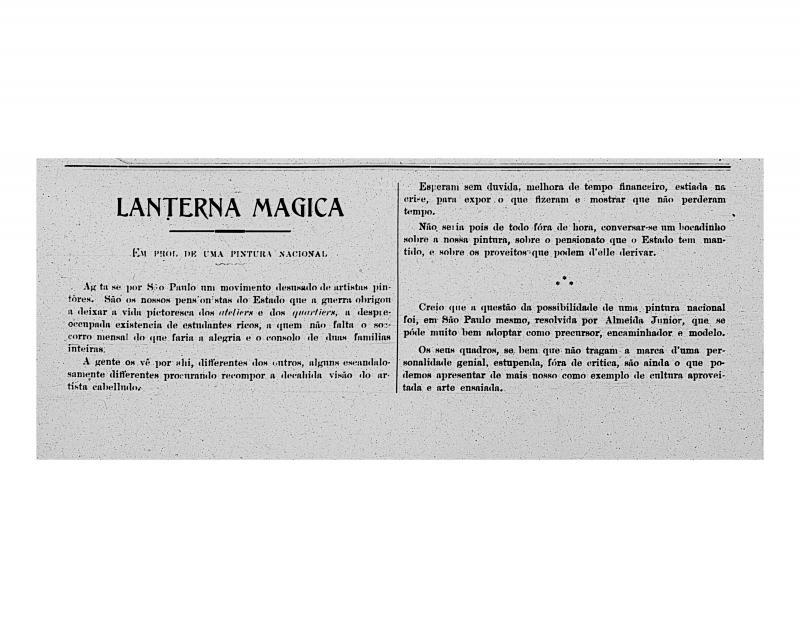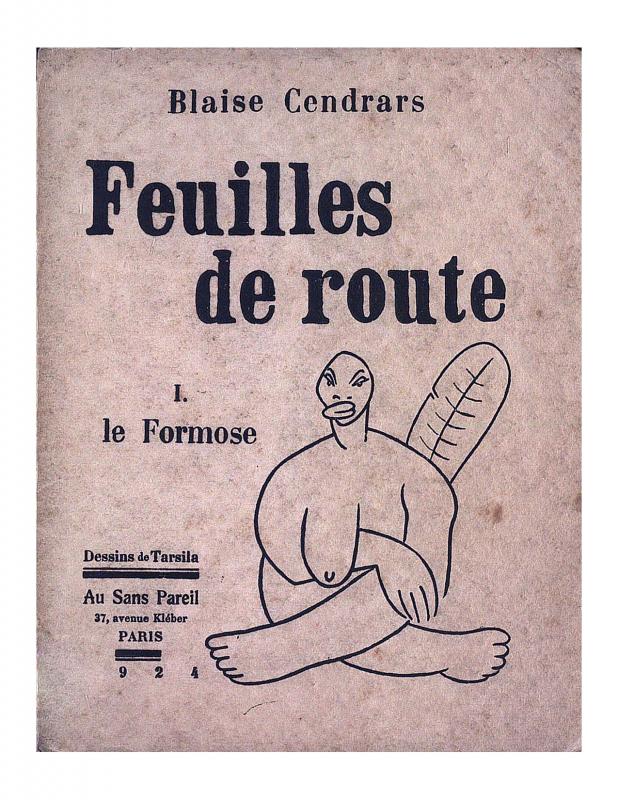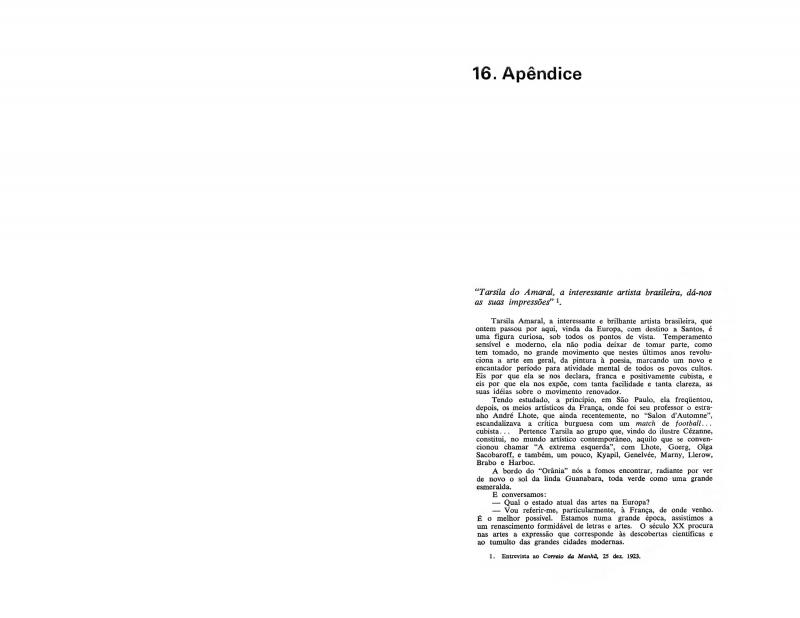The Pau-Brasil movement, which dated from 1922 to 1926, encompassed a crucial early phase of Brazilian modernism. It combined literature and painting, evident in the involvement of figures such as Oswald de Andrade, Mário de Andrade, Tarsila, and Cendrars. The origin of the movement can be traced to a trip that that group of intellectuals took in 1924 to the baroque towns in the state of Minas Gerais, a trip they called the “Discovery of Brazil caravan.”
Tarsila do Amaral’s painting entitled O Abaporu [The Cannibal] was the spark that inspired Oswald de Andrade and Raul Bopp to launch the anthropophagic movement in 1928. That movement took shape around the literature and painting coming out of São Paulo at the time, work communicated by the Revista de Antropofagia during both its phases; Osvaldo de Andrade’s now-famous “Manifesto Antropofago” was published in the first issue of that journal.
For two texts fundamental to this period written by Oswald de Andrade, see “Manifesto Pau-Brasil” (1924) (doc. no. 781051) and “Em prol de uma pintura nacional” (doc. no. 783886).
Tarsila did the illustrations for the books Feuilles de route I. Le formose by Blaise Cendrars (ICAA digital archive doc. no. 780879) and Pau Brasil by Oswald de Andrade, et al. (doc. no. 784909). For further reading, see “Tarsila” (doc. no. 782543) and “Tarsila: Rio-1929” (doc. no. 785011), both written by the artist, and the interview “Tarsila do Amaral, a interessante artista brasileira, dá-nos as suas impressões” (doc. no. 781904).





